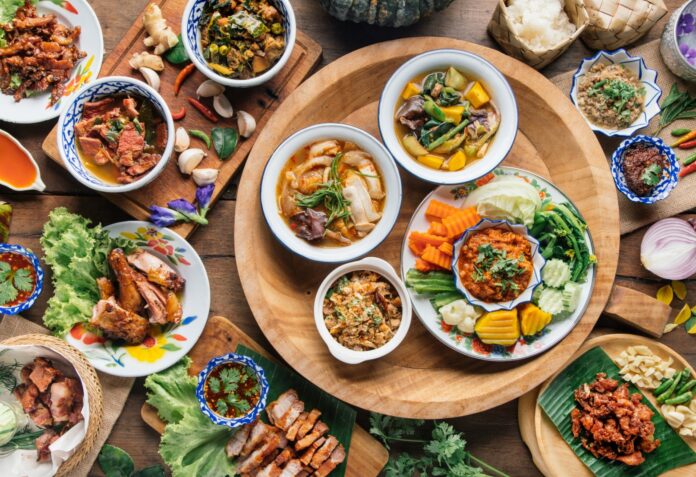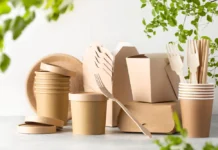Having food delivered to your house feels great when you are not in the mood of thinking about what to have, let alone cooking it. But what is even better is craving a meal and knowing how to make it, right? Even if it is exotic like Thai meals usually are.
Thai meals combine all the flavors you know: spicy, savory, bitter and even sweet. And one might think following a Thai recipe can be tricky, but the complete opposite is actually true. To cook a Thai meal successfully, you just need to have some tips in hand and here are some basic ones.
Basic ingredients
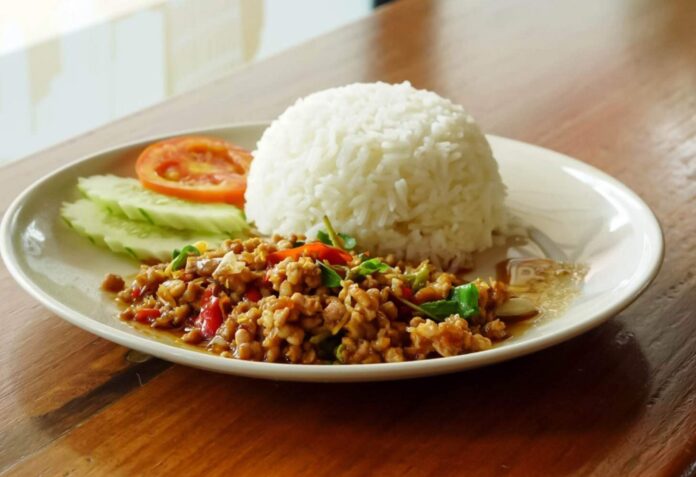
Thai food is actually characterized by using a handful of ingredients. However, the more you experiment with it, you will notice that some essential ingredients can be found in almost every recipe. In addition to this, and with the growing popularity of Thai gastronomy, they can be easily found in local stores or supermarkets.
- Nam Tan Ma-phrao: or, in English, Coconut palm sugar. As mentioned above, Thai cuisine mixes flavors and the sweet factor is always there. Coconut in every shape is used as a sweetener and probably the most used in this particular gastronomy. Together with coconut sugar, coconut milk is highly used in rice-based preparations.
- Nam Pla: or, In English, fish sauce. Coming from fermented salted fish, this sauce is used in salads as dressing or in dips and marinades.
- Rice noodles and Jasmine rice: both rice and rice noodles are kind of the backbone of Thai food. They are boiled in water, broth, steamed or even fried. It can be used for many different preparations.
- Seasoning: in this category, you will find ingredients ranging from turmeric to basil leaves and kaffir lime leaves. Don’t be afraid of experimenting and trying those seasonings you have in stock but never use.
Cooking methods
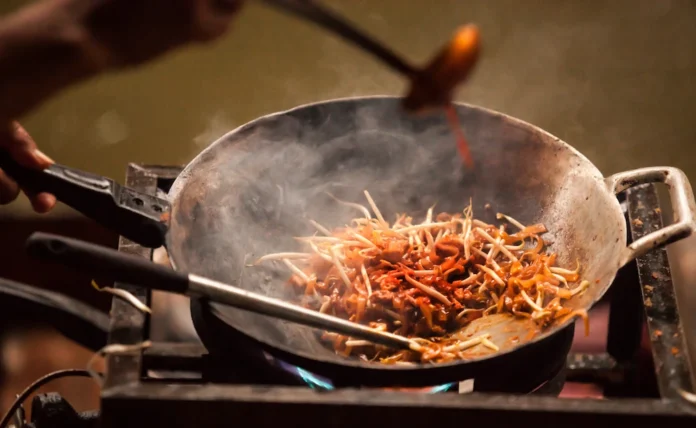
- Toon: this, in English, means stewing. Stewing is a cooking technique that requires slow cooking over a low heat and for long periods. The liquid can be salted water, different sauces or vegetable broth. If you use this method to cook meat, you will get a super tender piece.
- Tod: it sounds similar, but it is completely different. This cooking method consists of submerging food in almost boiling oil. It is basically deep frying food. However yummy the food is when cooked in this way, it is not the healthiest option.
- Neung: this, in English, means steaming. This method is highly used when cooking Jasmine rice or rice noodles. The food is cooked thanks to the moisture the steam produces. It requires a steamer or what they usually use, a steaming basket.
Cooking tools
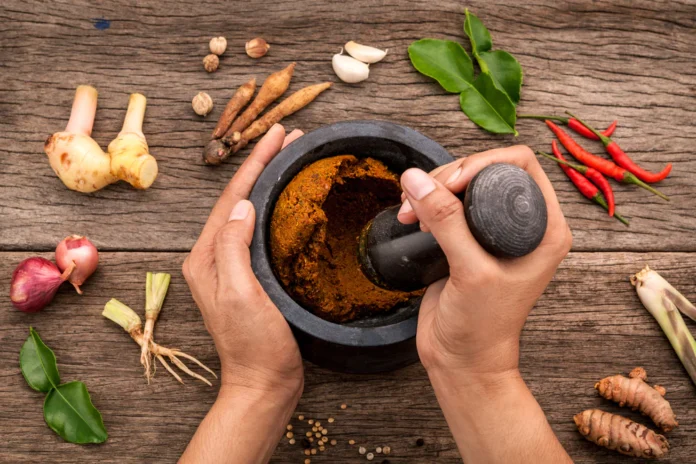
- Steamer: both steaming pots or steamer baskets are perfect. For a true Thai experience, the latter is suggested. To use it, you have to place it inside a smaller pot and cover the rice, for example over a linen so that it cooks evenly.
- Wok: considering most Thai meals are presented in this way, a wok is highly efficient. In it, you can cook separate ingredients all together achieving that mix of flavors that is so common in Thai cuisine. Because of its shape, it is perfect for the deep frying cooking method. Even if it can be a bit expensive, it is totally worth it.
- Sharp knife and cutting board/mortar: if you are experimenting with Thai food, get ready to chop and slice every single ingredient you use. Even if you don’t need to slice it, you will need to mash and fuse ingredients so, both a cutting board and a mortar come in handy for Thai recipes.
A relatively simple Thai recipe you can try
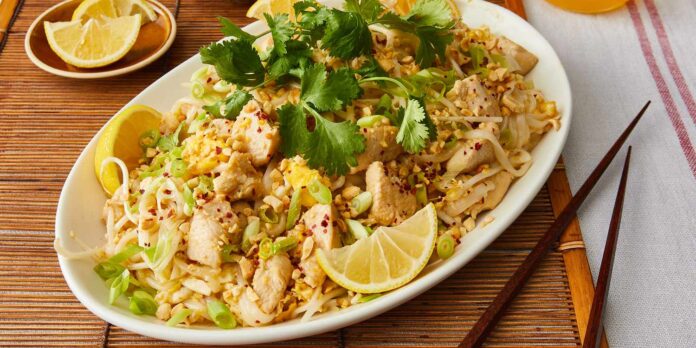
To put these tips, ingredients and methods into practice, you can try out this recipe which is a staple Thai preparation: riceselect.com/recipe/bangkok-rice-shrimp-salad.
Spices
Thai cuisine is renowned for its bold and vibrant flavors, which are largely attributed to the use of a wide range of spices and herbs. Spices are an integral part of Thai cooking and are used to add depth, complexity, and a unique aroma to dishes. Here are some of the most commonly used Thai spices in Thai cuisine:
- Lemongrass: A popular ingredient in Thai cooking, lemongrass has a subtle citrusy flavor and is used in soups, curries, and stir-fries.
- Galangal: This root is similar to ginger, but with a distinct flavor. It is used in soups and curries to add a subtle heat and a citrusy note.
- Kaffir lime leaves: These leaves have a strong citrusy flavor and are used to add a bright, fresh note to soups, curries, and stir-fries.
- Thai basil: This herb has a slightly spicy, anise-like flavor and is used in stir-fries, curries, and noodle dishes.
- Coriander (Cilantro): The leaves and seeds of this herb are used in Thai cuisine. The leaves are used to garnish dishes and add a fresh, citrusy flavor, while the seeds are used as a spice in curries.
- Turmeric: This bright yellow spice has a slightly bitter, earthy flavor and is used in curries and rice dishes.
- Cumin: This spice has a warm, earthy flavor and is used in curries and stir-fries.
- Chili peppers: Thai cuisine is known for its spicy dishes, and chili peppers are used liberally in many recipes to add heat and depth of flavor.
- Garlic: A staple ingredient in many cuisines, garlic is used in Thai cooking to add a pungent, savory flavor to dishes.
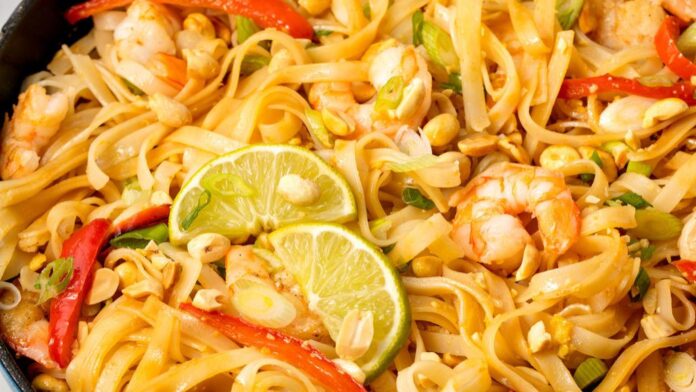
These are just a few of the many spices and herbs used in Thai cuisine. Thai spices are often used in combination to create complex and flavorful dishes that are beloved around the world. If you’re interested in trying your hand at cooking Thai food, start by stocking up on some of these essential Thai spices and experimenting with different flavor combinations to create your own unique dishes.
Thai recipes may seem hard at first, but the more meals you make, you will see how not only ingredients, but cooking patterns are repeated. This makes Thai food highly accessible and the best way to try new and exciting dishes. In addition, most recipes can be adapted to make them vegan or vegetarian.
Next time you feel like having an innovative homemade dish, turn to any Thai cookbook with these tips at hand, you won’t be disappointed!

